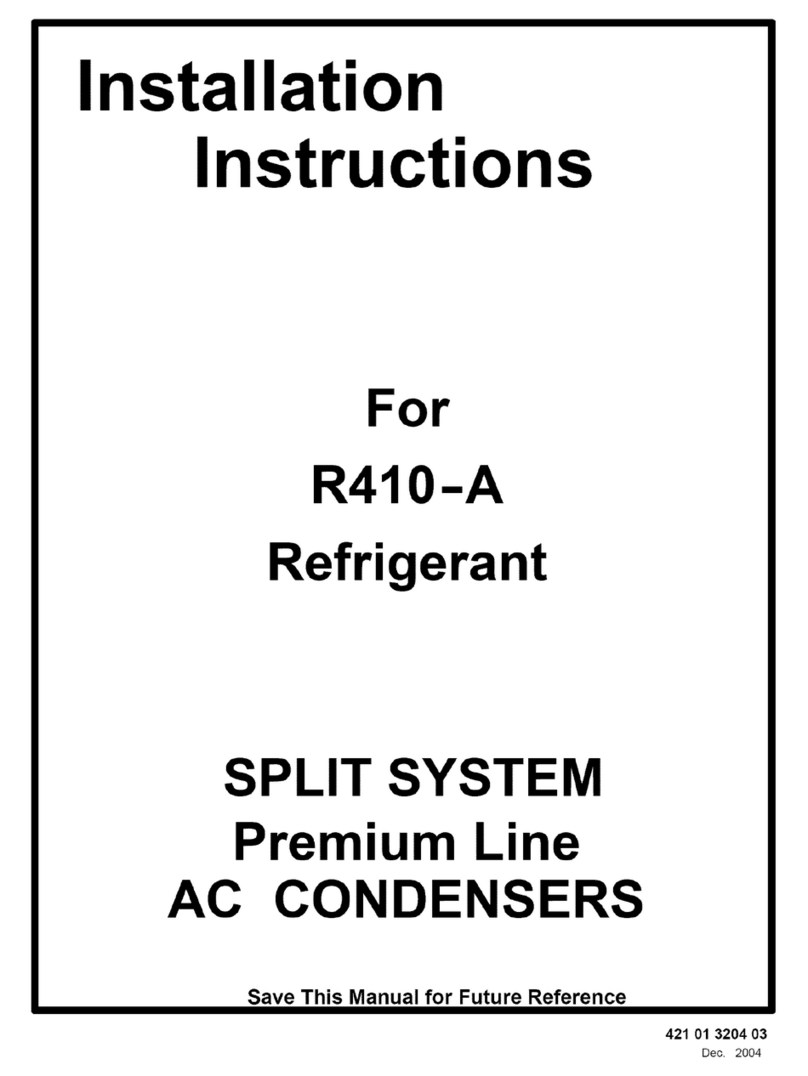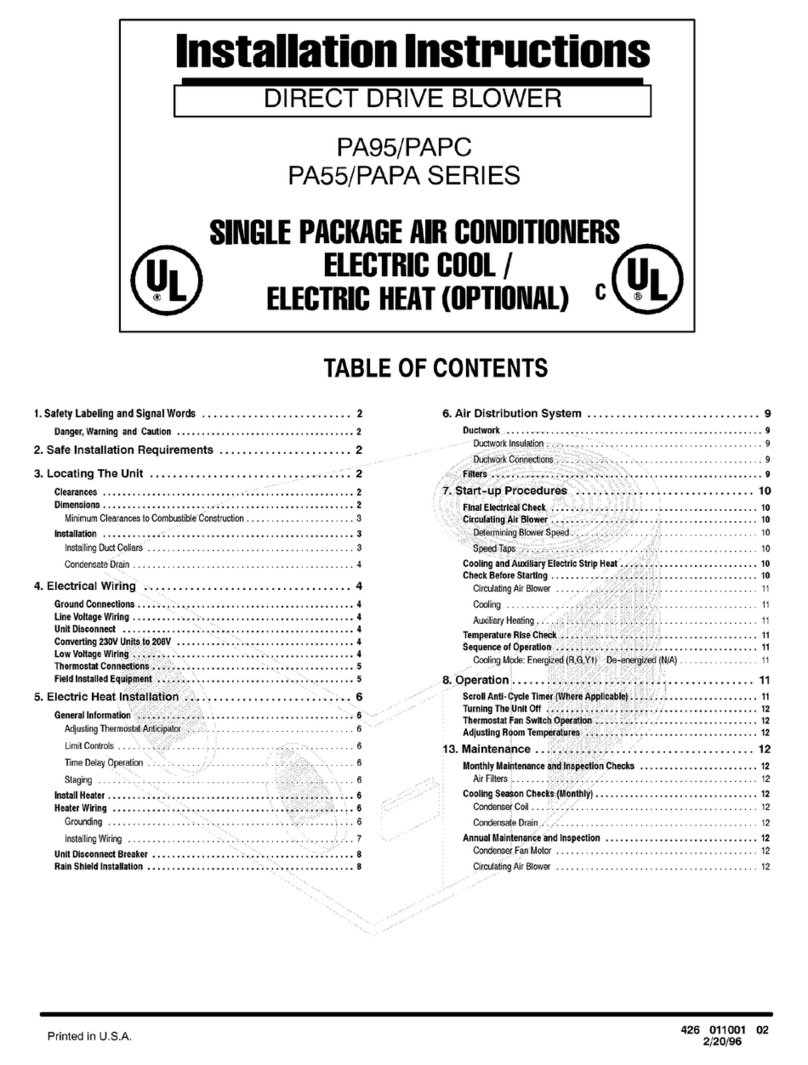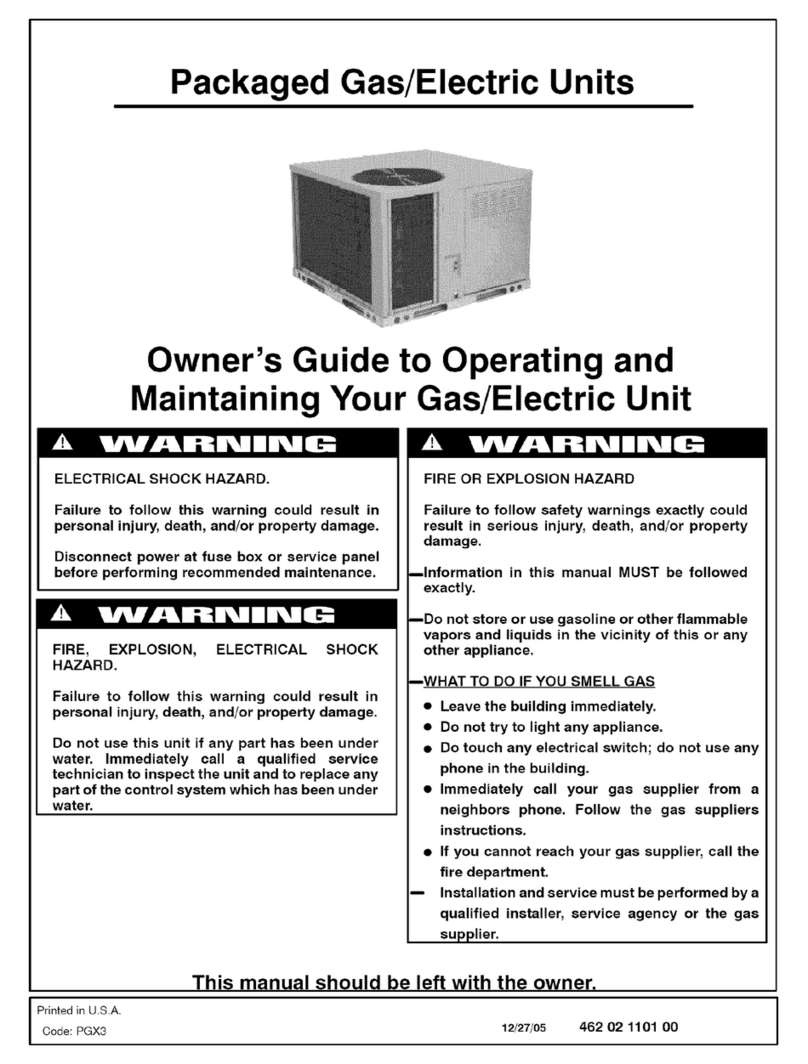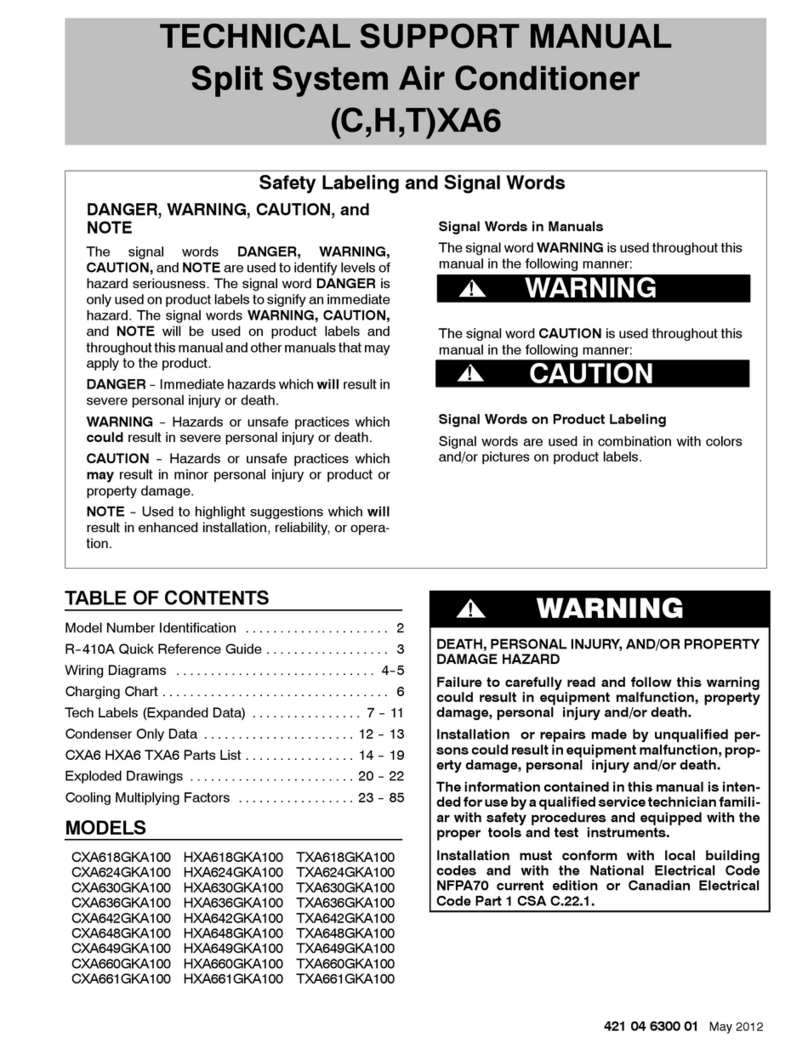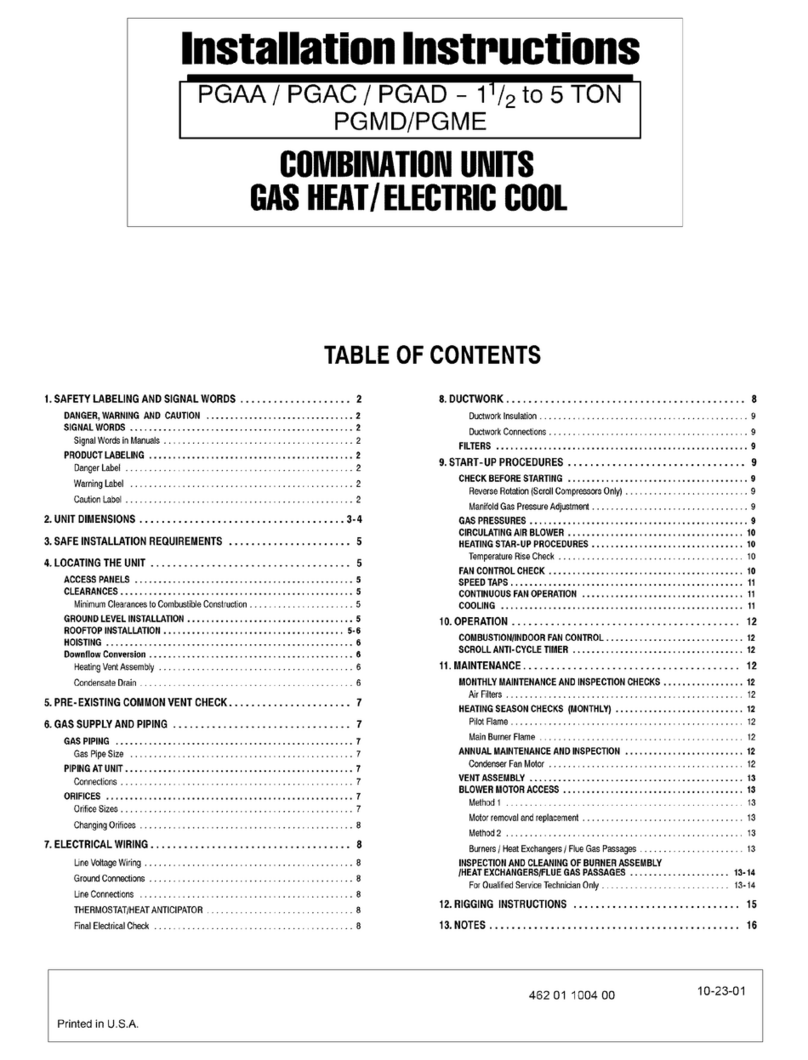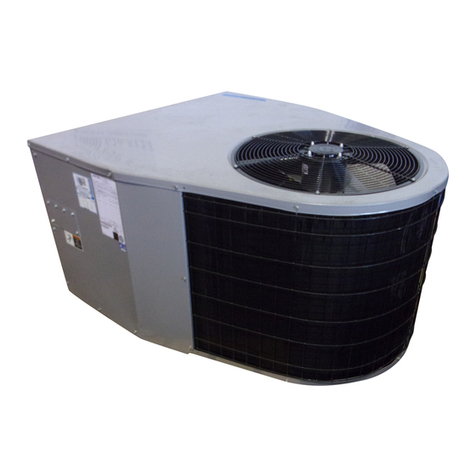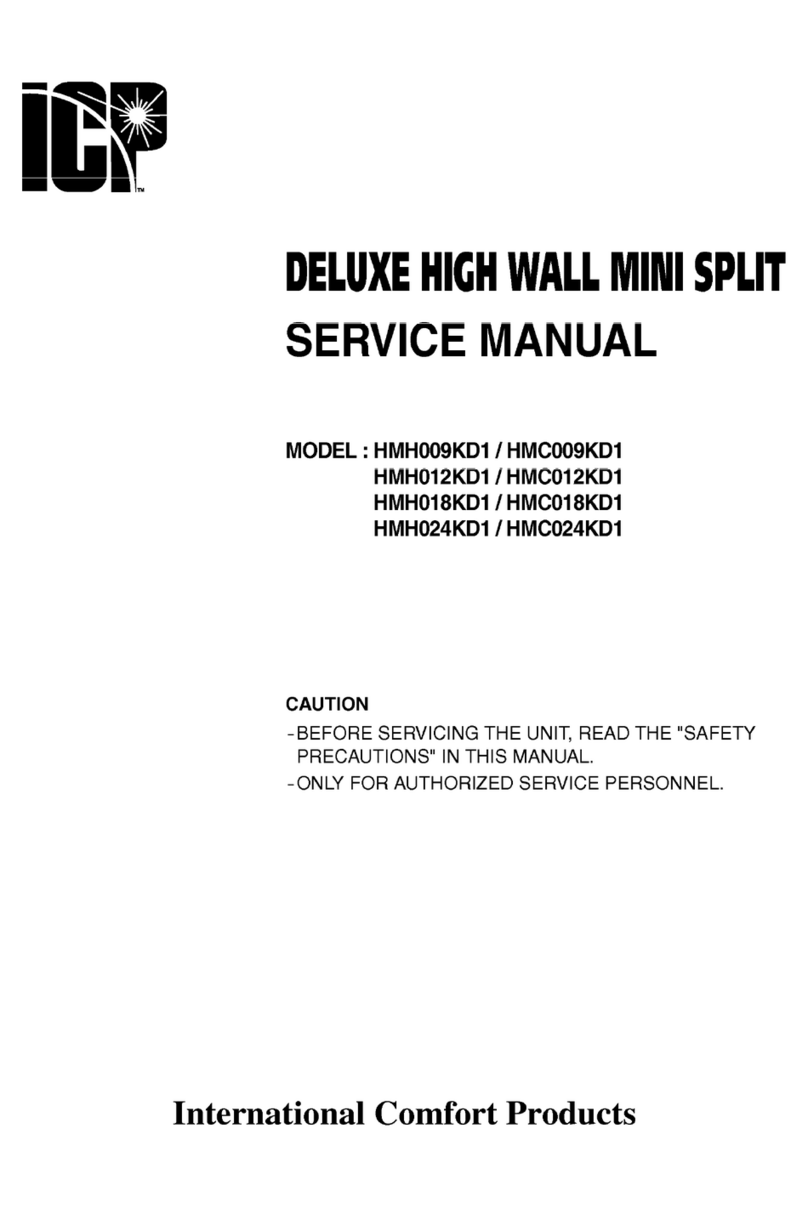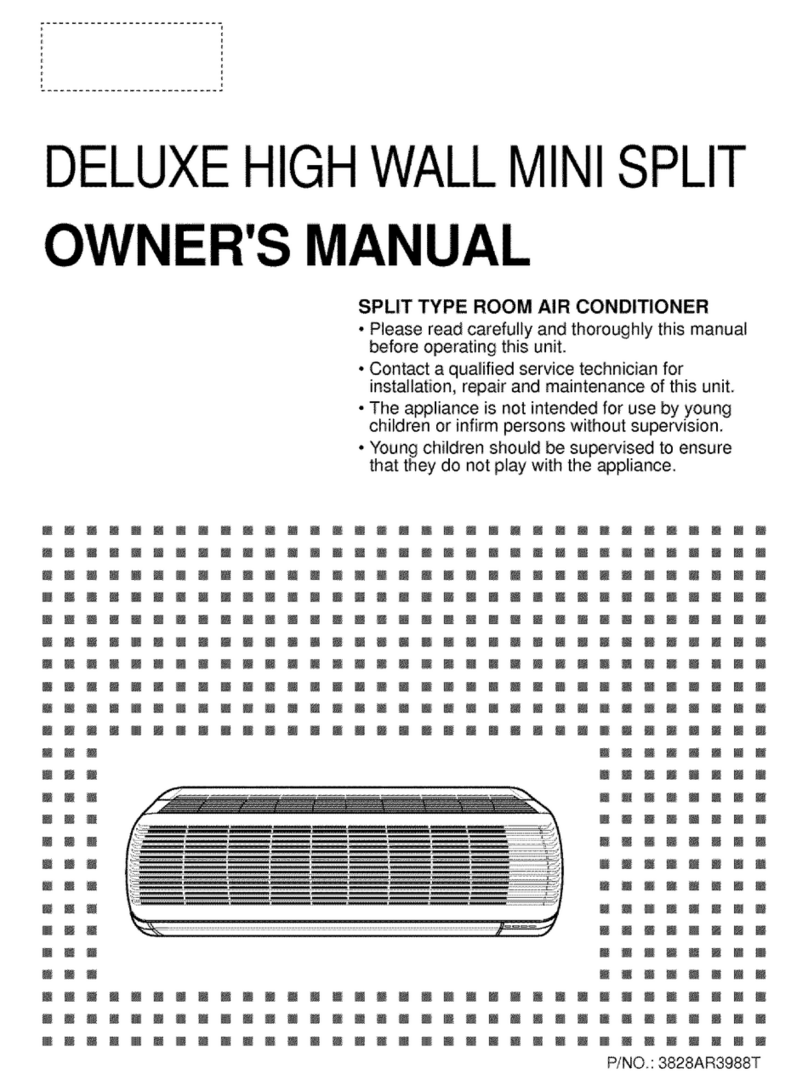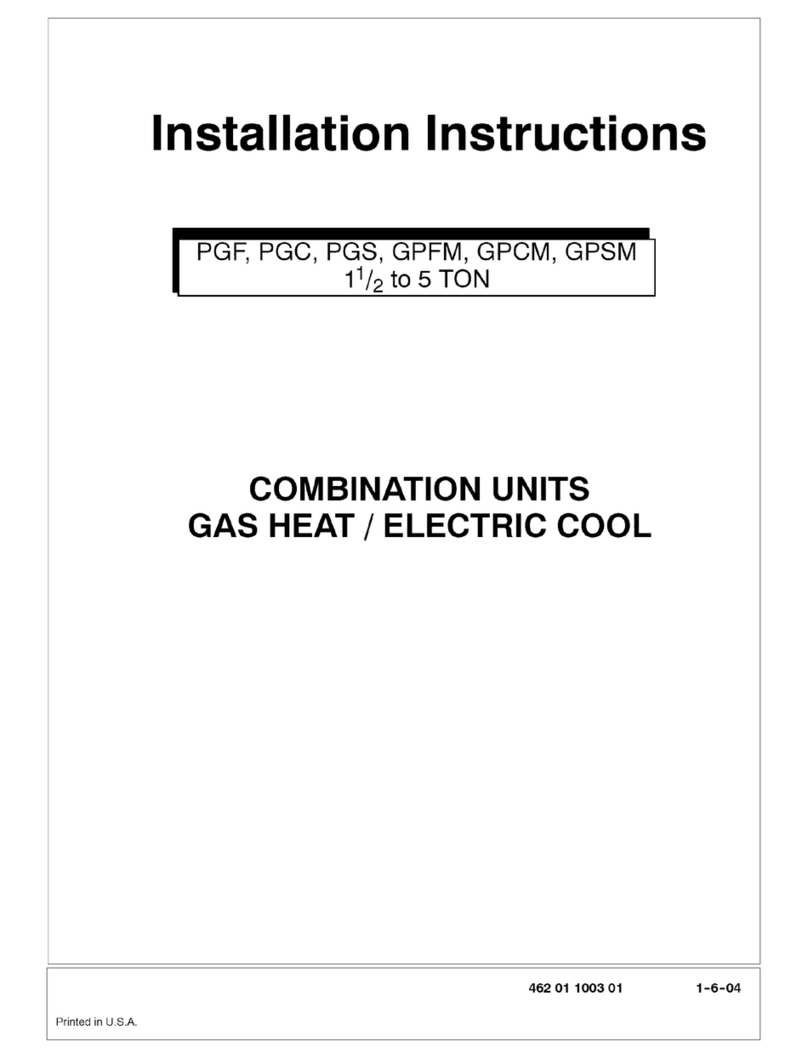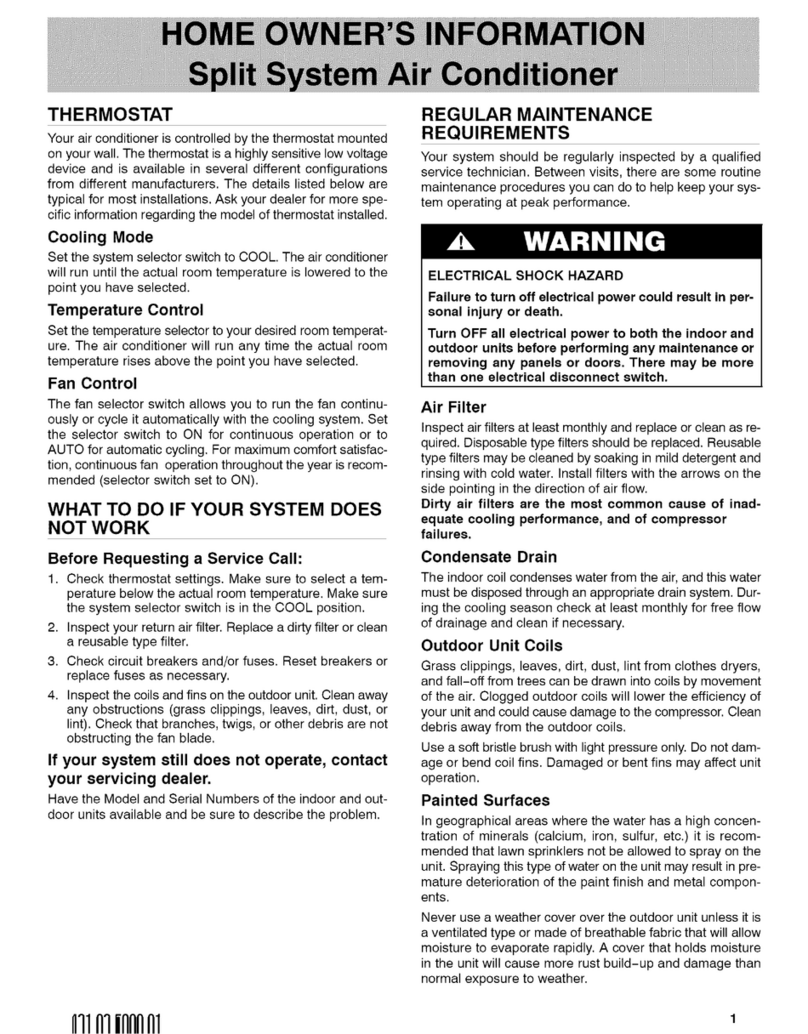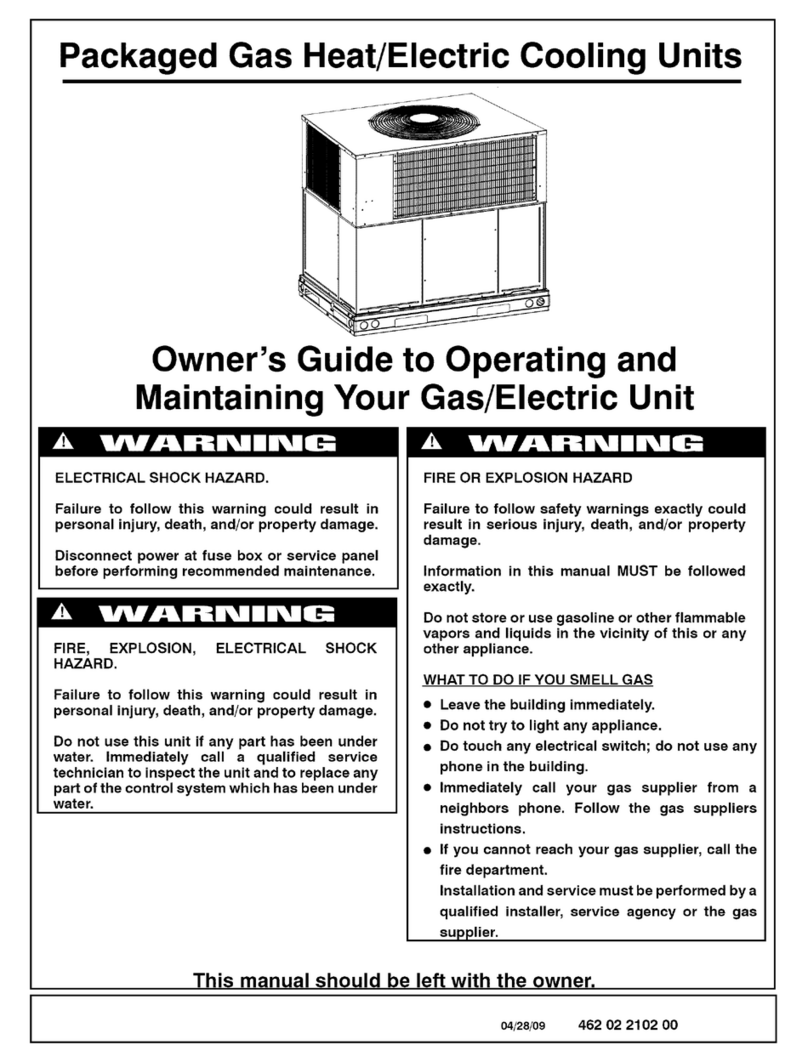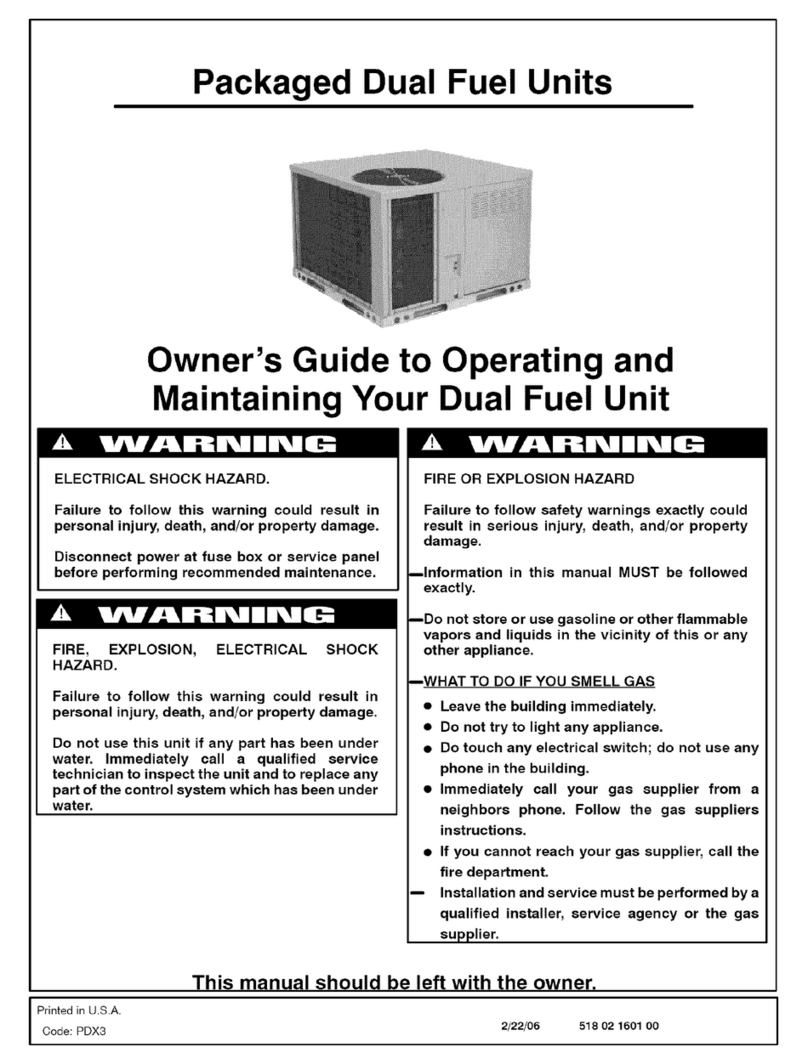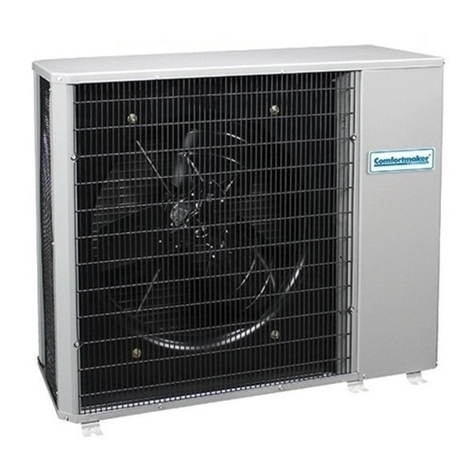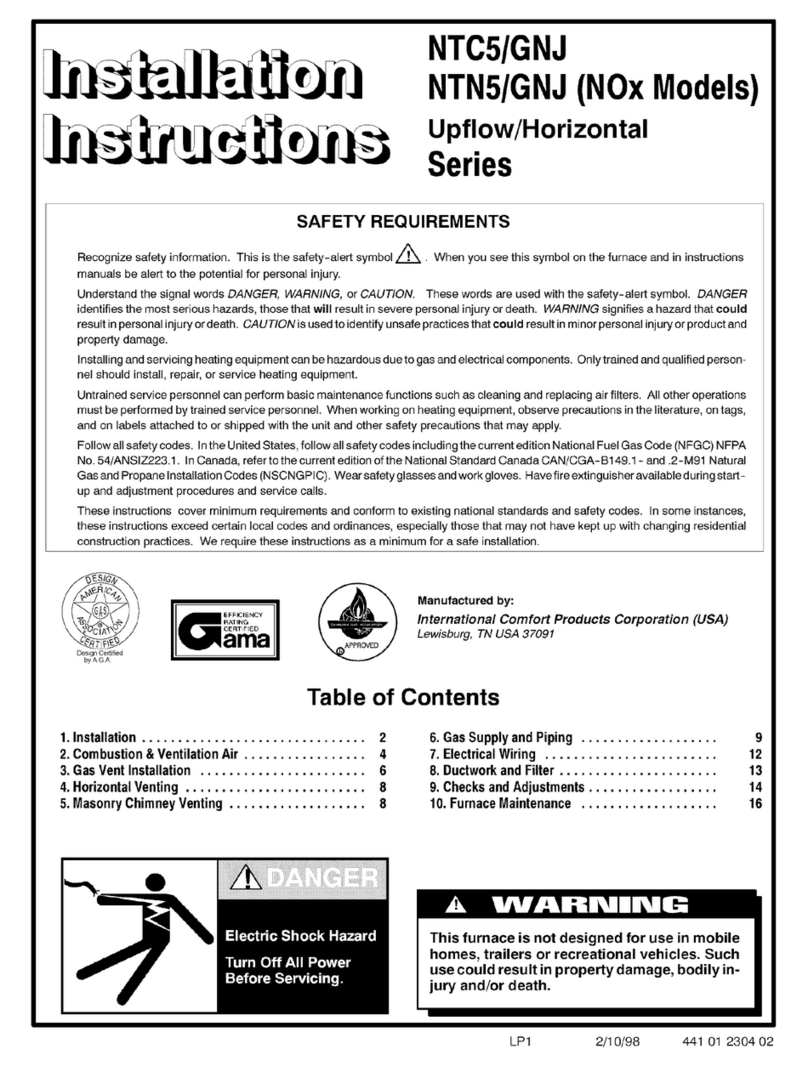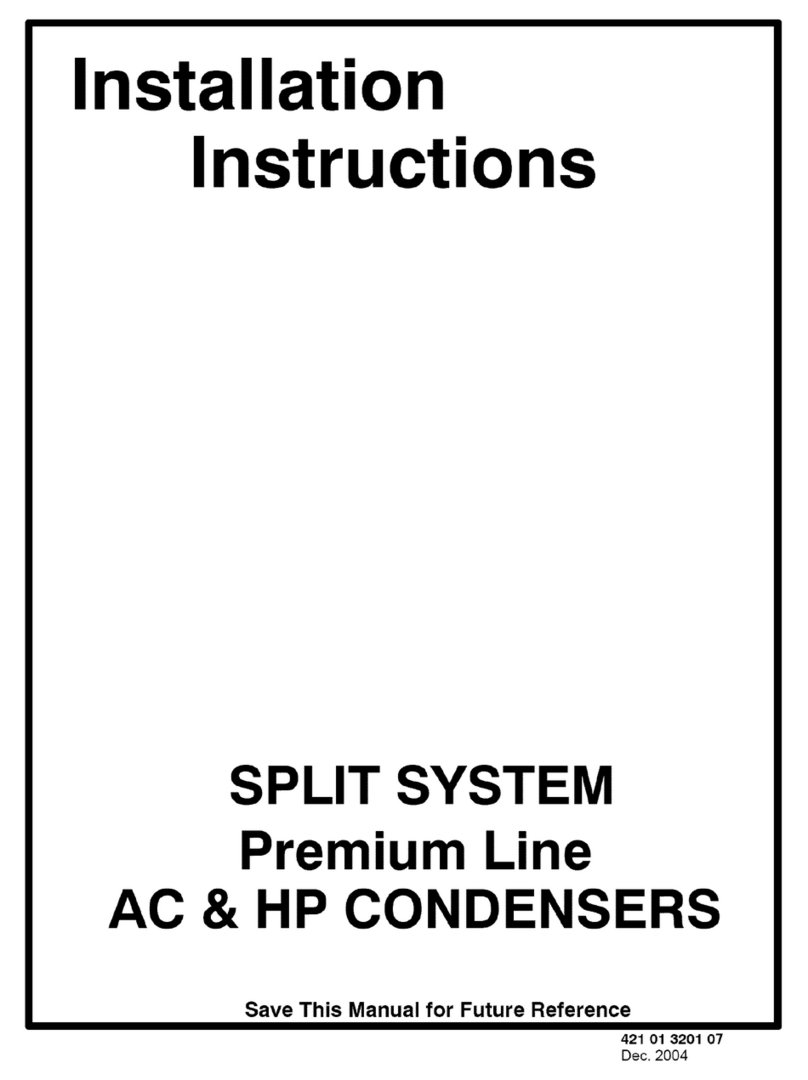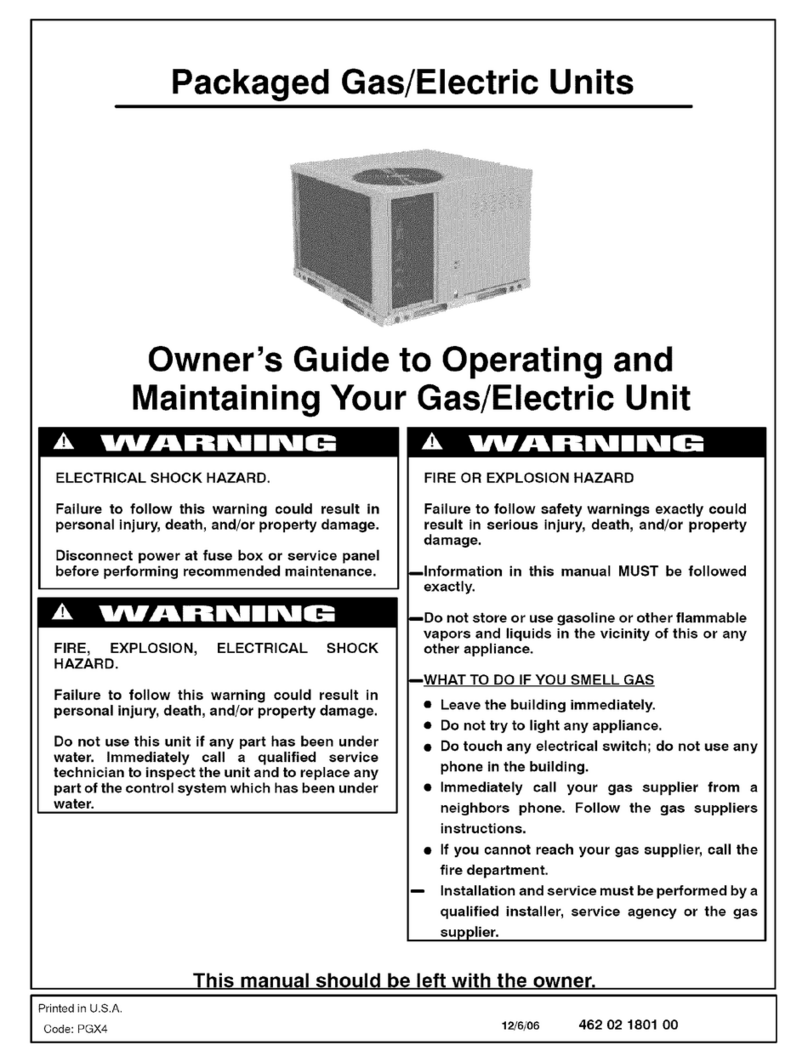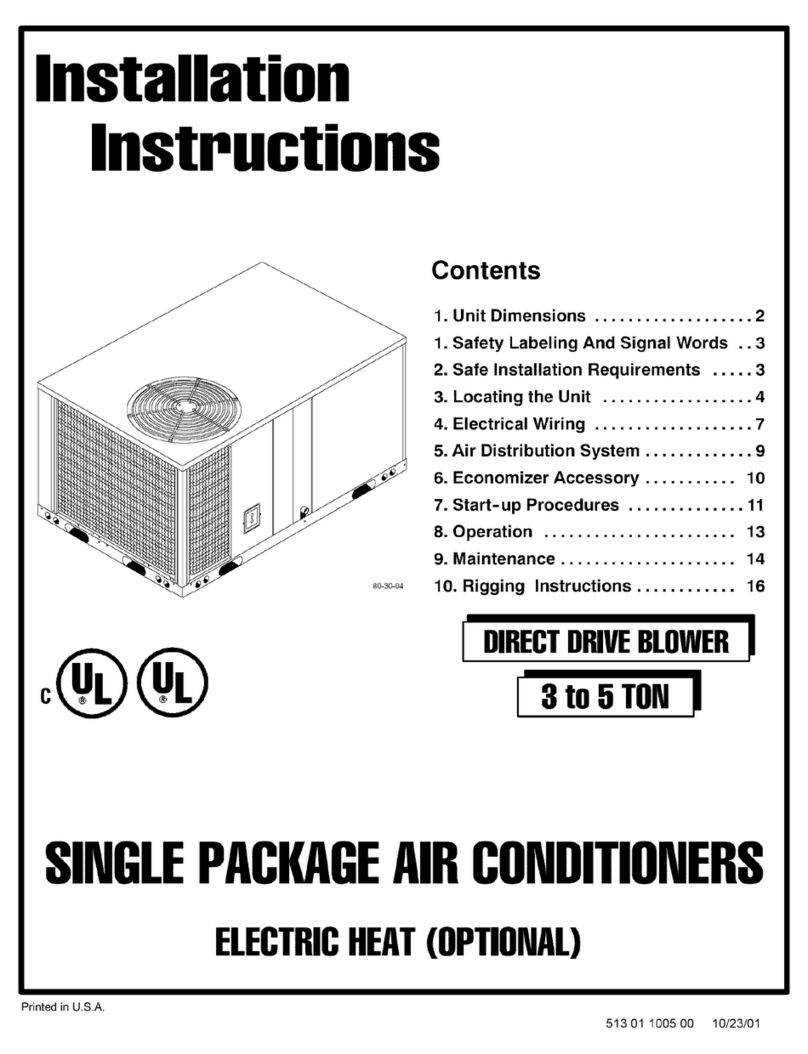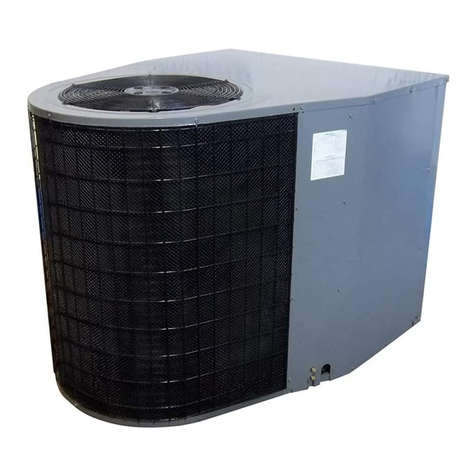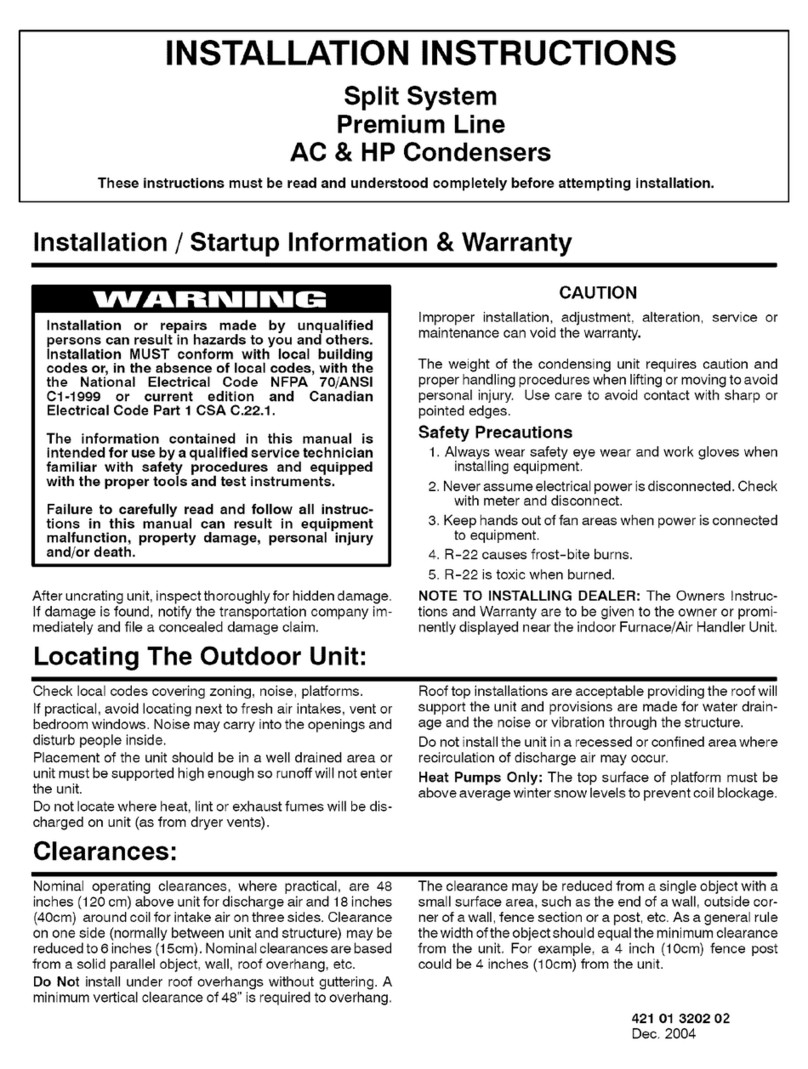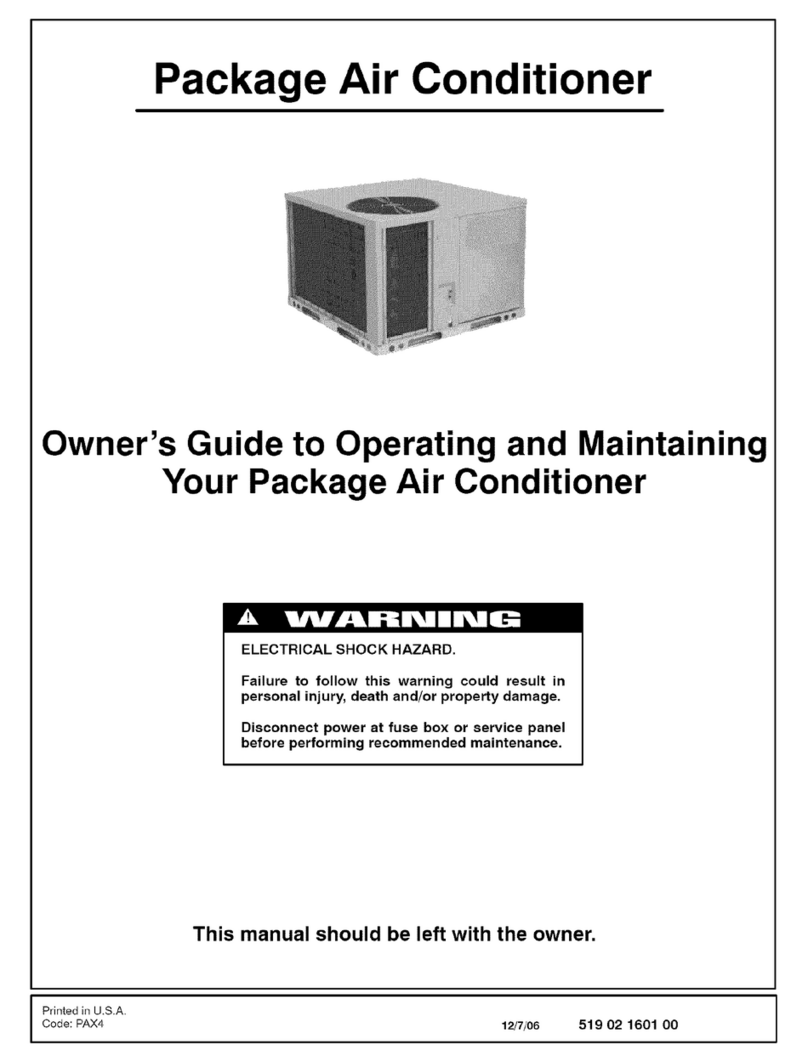
The air conditioner has 2 stages of cooling and will
automatically pick the correct cooling stage based on the
difference between the actual indoor temperature and the
set point temperature on the thermostat. For maximum
efficiency, avoid frequent changes to the set point
temperature.
4.When the cooling setpoint has been satisfied
a. The compressor and condenser fan will de-energize
immediately.
b. The evaporator motor will either immediately turn off
or run for an additional 90 seconds before turning off
(field-selectable).
Cooling Cycle - When operating in the cooling cycle, your
air conditioner will run until the indoor temperature is
lowered to the level you have selected. On extremely hot
days, your air conditioner will run for longer periods at a time
and have shorter "off" periods than on moderate days.
The following are typical conditions that add extra heat
and/or humidity to your home. Your air conditioner will work
longer to keep your home comfortable under these
conditions:
• Entrance doors are frequently opened and closed
• Laundry appliances are being operated
• A shower is running
• More than the usual number of people are present in the
home
• More than the normal number of electric lights are in use
• Drapes are open on the sunny side of the home
GAS HEATING START-UP PROCEDURE
1. Temporarily set balance point warm enough to lock out
heat pump. Adjust thermostat setting above room
temperature and set thermostat selector to HEAT. The
combustion air blower will energize on high speed.
2. The combustion air blower will run on high speed for 15
seconds to purge the combustion chamber.
3. After the 15 second purge, the combustion air blower
will remain on. The sparker will turn on to ignite the gas
at the same time the gas valve is energized on low
stage. Make sure the gas valve is in the "ON" position
(Refer to Figure 14 and the instruction label located on
the inside of the burner access panel.
4. The sparker will remain energized for 7 seconds or until
a flame is detected by the flame sensor. It may take
several ignition attempts to purge the air out of the gas
line at the initial start-up of the unit.
5. Once flame isproven, the ignition control will switch the
combustion air blower to low speed. The unit will run in
low stage gas heat for 10 minute or until the thermostat
is satisfied, whichever is shorter. Ifthe thermostat isnot
satisfied after 10 minutes, the unit will go to second
stage gas heat and run until the thermostat is satisfied.
6.30 seconds after the burners light, the circulating air
blower will begin to run.
7. After checking start up, return balance point
temperature to desired setting.
NOTE: Regardless of whether the thermostat is calling for
low stage gas heat or high stage gas heat, the unit will
always start with the high inducer speed and low stage gas
valve operation.
The gas heating system has 2 stages of heating and will
automatically pick the correct heating stage based on the
difference between the actual indoor temperature and the
set point temperature on the thermostat. For maximum
efficiency, avoid frequent changes to the set point
temperature.
7. When the heating setpoint has been satisfied:
a. The gas valve will turn immediately off.
b. The combustion air blower will run for an additional
15 seconds to purge exhaust gas.
c. The circulating air motor will continue to run an
additional 60, 100, 140, or 180 seconds
(field-selectable) before turning offto extract additional
heat from the heat exchanger.
FIRE AND/OR EXPLOSION HAZARD
Failure to follow this warning could result in personal
injury, death, and/or property damage.
Do NOT attempt to light the pilot or burner with a match
or flame of any kind.
ROUTINE MAINTENANCE
All routine maintenance should be handled by skilled,
experienced personnel. Your dealer can help you establish
a standard procedure.
For your safety, keep the unit area clear and free of
combustible materials, gasoline, and other flammable
liquids and vapors.
To assure proper functioning of the unit, flow of combustion
and ventilating air must not be obstructed from reaching the
unit. Clearance of at least 30 in. is required on all sides
except the duct side.
MAINTENANCE AND CARE FOR THE
EQUIPMENT OWNER
Before proceeding with those things you might want to
maintain yourself, please carefully consider the following:
• TURN OFF GAS SUPPLY AND ELECTRICAL
POWER TO YOUR UNIT BEFORE SERVICING OR
PERFORMING MAINTENANCE.
• Do not turn off electrical power to this unit without first
turning off the gas supply.
When removing access panels or performing
maintenance functions inside your unit, be aware of
sharp sheet metal parts and screws. Although special
care is taken to reduce sharp edges to a minimum, be
extremely careful when handling parts or reaching
into the unit.
AIR FILTERS - Air filter(s) should be checked at least every
3 or 4 weeks and changed or cleaned whenever it becomes
dirty. Dirty filters produce excessive stress on the blower
motor and can cause the motor to overheat and shut down.
Table 1 indicates the correct filter size for your unit.
When installing the new filter(s), note the direction of the
airflow arrows on the filter frame.
141
